6 Tips to Help Navigate a European Street Market
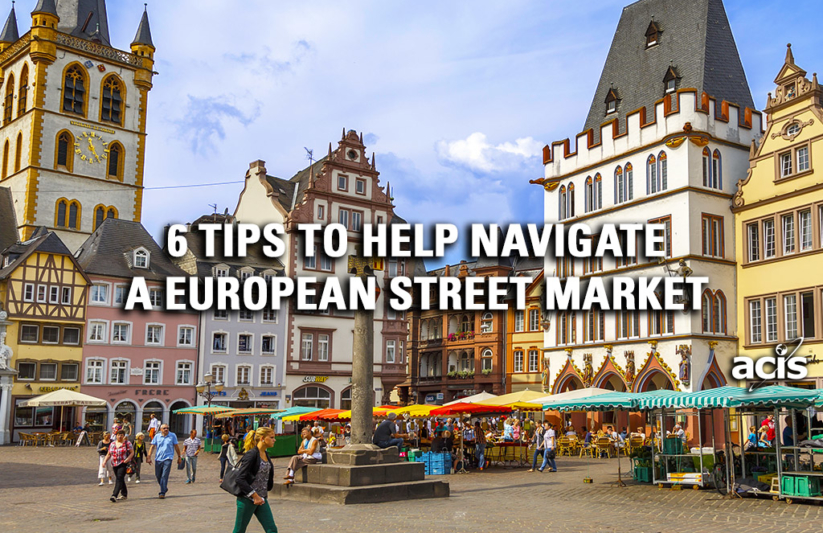
In Europe, the marketplace is the hub of local life. Not only do you go there to purchase fresh, locally-sourced food at unbeatable prices, it’s also a place to pick up a new recipe idea from your butcher or catch up on neighborhood gossip. It’s a space where local associations and political candidates go to hand out flyers and where strollers confront shopping caddies in a battle for precious room for maneuver.
The marketplace can be daunting if you’re claustrophobic or struggle in crowds, or if you feel too shy to let your voice carry above the throngs in a desperate attempt to purchase your lunch. But fear not. The seller is your friend. He’s there to make sure that you leave with everything you need and more besides, and he’ll be happy to explain, cajole and joke around…
Tip no. 1: Choosing Your Stand
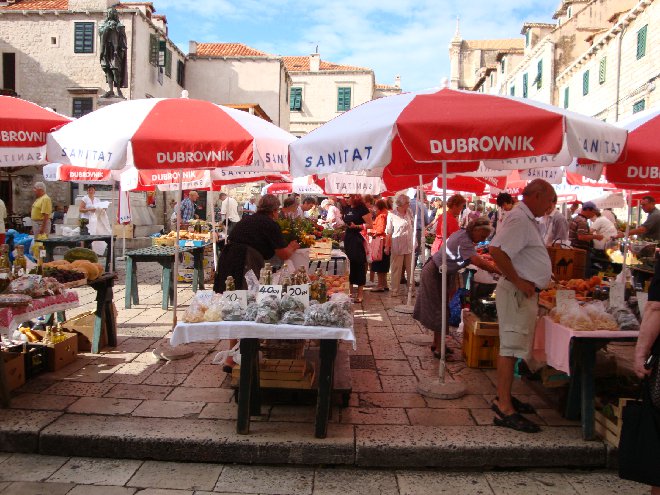
When you arrive at a market, don’t stop and buy all your groceries at the first stand you see. First, take a stroll through the market, compare prices (which are usually marked by the kilo) and notice where the crowds are gathering. If there is a much bigger line in front of one fishmonger compared to the one next door, it’s a pretty good sign that the locals prefer it, either for the quality or range of produce on offer. You may also notice that one fruit stand seems a lot more expensive, and this will likely be the organic one ( “bio” in French). Note, however, that GM food is not legal in France, so the main thing the French worry about is the use of pesticides on their crops.
Tip no. 2: Communicating with the Sellers
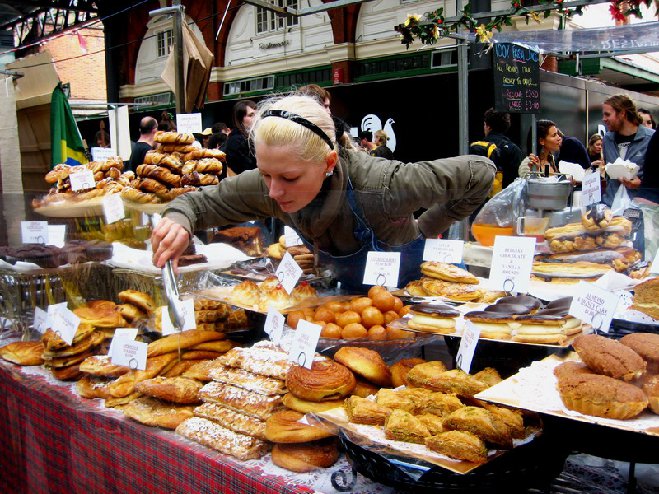
For the most part, the French will be polite about standing in line and knowing who’s turn it is, but you will nevertheless have to be assertive. On most stands, you will take a little plastic or paper bag and fill it yourself (one type of item per bag), then hand it to the seller to weigh. Be sure to catch their eye, smile, say a firm, loud “Bonjour!”, and pass them your purchases. They’ll always ask you if you want anything else, and if you’re done, you can simply reply “C’est tout, merci!”.
Tip no. 3: Understanding the Produce
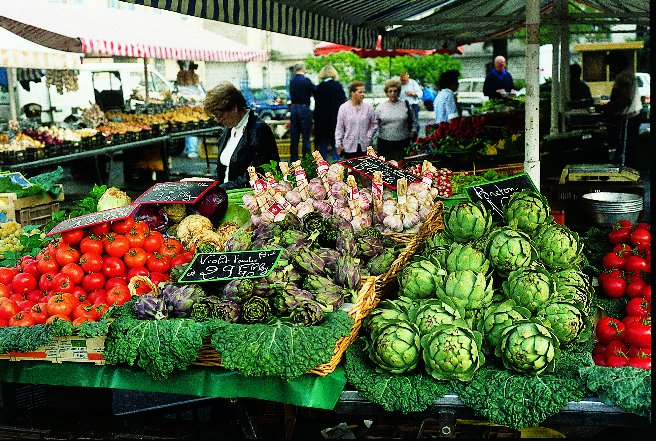
It’s up to you to select your fruits and vegetables. There are no returns if you get home and you realize your avocado is off! Generally, there will be a mixture of unripe, just ripe, and slightly over-ripe produce on offer, since you may want to eat some of your tomatoes that very day, keep some for the end of the week, or use the soft ones in a sauce. If you’re unsure, just ask the seller to select them for you. You can say, “Je voudrais des tomates pas trop mûres/mûres/très mûres”. Sometimes you may even see something for the first time in your life and be unsure if it’s a fruit or a vegetable. Don’t hesitate to ask: “C’est quoi?”, and perhaps even “Comment ça se mange?” (how do I eat it?).
Tip no. 4: The Taste Test
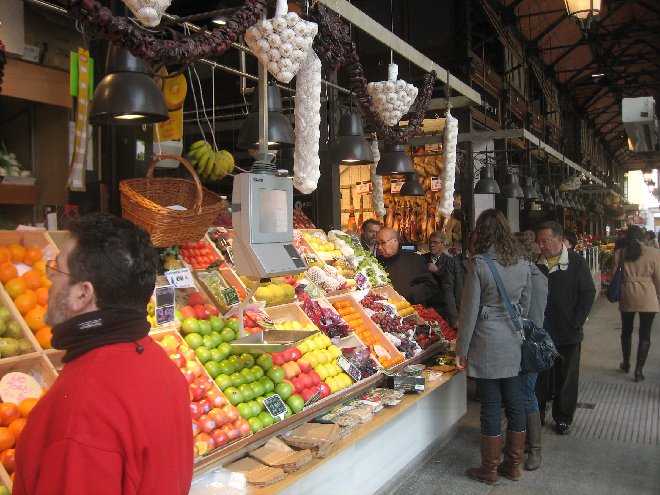
Market sellers will be more than happy for you to taste some of their produce to let you try it for the first time, or even just to convince you of how good it is. Sometimes slices of pineapple or tangerine are already laid out for customers to sample. And it’s always a good idea to do so. There’s no better way to tell whether the plums are sweet or too sour than to taste them! Don’t feel obligated to buy once you have, they won’t take offense. If you do like what you’ve tasted and intend to buy some, be sure to let them know: “Mmm, c’est délicieux!” (it’s delicious).
Tip no. 5: Weighing the Ingredients
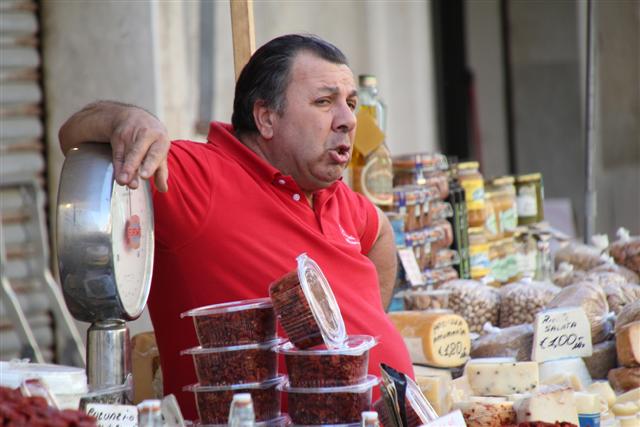
You may now be ready to buy their delicious plums, but the price is by the kilo, so how much will it cost you exactly? First, think of one kilo as being roughly two pounds. You probably won’t eat a kilo of plums all by yourself so half a kilo (500g) will do (“un demi-kilo s’il-vous-plaît”). That way, you can roughly calculate what you’ll owe them by dividing the price shown by two. But watch out, things like berries are often priced by the 100g, not by the kilo, so if you’re not careful you may end up spending more than you planned! Once the seller weighs the produce, you can always ask him to remove some items if you realize it’s more than you intended (“un peu moins, s’il-vous-plaît”).
Tip no. 6: Counting the Change
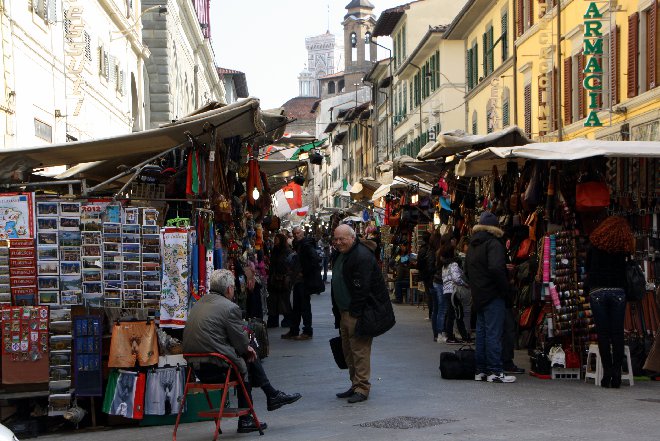
Finally, it’s a good idea to take change to the market, you’ll almost always have to pay in cash and they won’t be too happy if you whip out a €50 note to pay €2 for your apples. Sometimes, if the price comes to €8.57, the seller might just round it up to €8.60, or usually down to €8.50 to avoid the hassle of dealing with a few cents. They also like to joke around, so don’t panic if you’re told that your bag of bananas costs €200! Market sellers are dynamic, busy people, always rushing and eager to serve the next customer, so it’s best to check that they’ve handed you the right change along with a receipt. If they’ve made a mistake, it won’t be on purpose, so just politely say “Je pense que vous me devez €…” (I think you owe me €…).
Leave them with a smile and a “Merci, au revoir!”.
What advice do you give your students when they embark on their first visit to a European open-air market? Let us know in the comments section below!
FREE CATALOG
ACIS Catalog
Browse over 100 educational travel excursions all over the world. From
service learning to cultural connections, find a trip to meet your goals.











Hey Una, Thanks for sharing such an useful as shopping in new place seems an difficult task . Very helpful as I’m planning a solo trip to Europe.